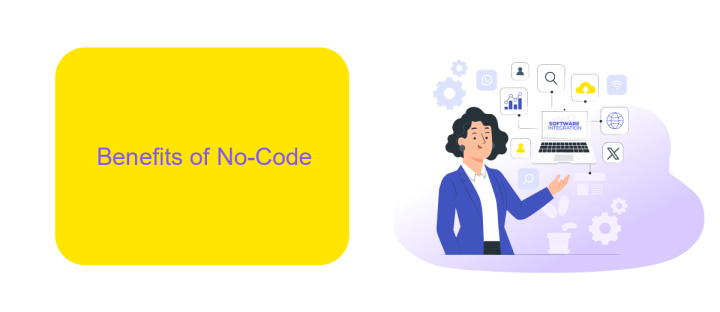Will No-Code Replace Developers
The rise of no-code platforms has sparked a debate in the tech community: will no-code replace traditional developers? These tools promise to democratize software development, enabling non-technical users to create applications with ease. However, the question remains whether no-code solutions can fully substitute the expertise and versatility of professional developers. Let's explore the potential and limitations of this emerging trend.
What is No-Code?
No-code is a development approach that allows users to create software applications without writing any code. This method leverages visual interfaces and drag-and-drop tools to build complex apps, making it accessible to individuals without technical backgrounds. No-code platforms are designed to simplify the development process, enabling rapid prototyping and reducing time to market.
- Visual Development: Users can design user interfaces and workflows using visual tools.
- Drag-and-Drop Functionality: Components can be easily added and arranged without coding.
- Pre-built Templates: Ready-made templates help users start quickly.
- Third-Party Integrations: Platforms like ApiX-Drive facilitate seamless integration with other services.
No-code platforms democratize software development by empowering non-developers to create functional applications. This approach is particularly useful for small businesses and startups that need to deploy solutions quickly without extensive resources. While no-code tools are not a complete replacement for traditional coding, they offer a valuable alternative for many use cases, enabling faster innovation and problem-solving.
Benefits of No-Code

No-code platforms offer a significant advantage by democratizing software development. They allow users without extensive programming knowledge to create applications, websites, and workflows through intuitive drag-and-drop interfaces. This not only reduces the time and cost associated with traditional development but also empowers a wider range of individuals to bring their ideas to life, fostering innovation and creativity across various industries.
Another key benefit of no-code solutions is their ability to streamline and automate processes through easy integration with other services. For instance, tools like ApiX-Drive enable seamless connectivity between different software applications, allowing users to automate workflows without writing a single line of code. This enhances productivity by minimizing manual tasks and reducing the likelihood of errors, making it easier for businesses to scale and adapt to changing needs efficiently.
Limitations of No-Code

No-code platforms offer a range of benefits, but they come with several limitations that can impact their effectiveness in certain scenarios. While these tools democratize software development, they are not without their drawbacks.
- Customization: No-code platforms often lack the flexibility needed for highly customized solutions, limiting the ability to tailor applications to specific business needs.
- Scalability: As businesses grow, no-code solutions may struggle to handle increased data loads and user traffic, potentially leading to performance issues.
- Integration: Integrating no-code applications with existing systems can be challenging. Although services like ApiX-Drive facilitate integrations, they may not support all required connections.
- Security: No-code platforms may not offer advanced security features, making them less suitable for applications that handle sensitive data.
- Complex Logic: Implementing complex business logic can be difficult or impossible with no-code tools, which are generally designed for simpler workflows.
Despite these limitations, no-code platforms remain a valuable resource for quickly developing and deploying applications. However, businesses should carefully assess their specific needs and potential growth to determine if a no-code solution is the right fit.
No-Code and Developers

No-code platforms have revolutionized the way we approach software development, making it accessible to a broader audience. However, this doesn't mean traditional developers are becoming obsolete. Instead, no-code tools complement the skills of professional developers, enabling them to focus on more complex and creative tasks.
Developers can leverage no-code platforms to streamline their workflows, automate repetitive tasks, and prototype ideas rapidly. This symbiotic relationship enhances productivity and innovation within development teams, allowing them to deliver solutions faster and more efficiently.
- No-code tools can handle simple applications and automations.
- Developers can integrate no-code solutions with traditional coding for complex projects.
- Platforms like ApiX-Drive facilitate seamless integration between various services, enhancing overall functionality.
In conclusion, no-code platforms and traditional developers are not mutually exclusive. They work best in tandem, where no-code tools handle straightforward tasks and developers tackle more intricate challenges. This collaboration ultimately leads to more robust and versatile software solutions, benefiting both businesses and end-users.
Future of No-Code
The future of no-code platforms is promising, as they continue to democratize software development and empower a broader range of people to create applications. These tools are becoming more sophisticated, enabling users to build increasingly complex systems without needing in-depth programming knowledge. As businesses seek to innovate rapidly, no-code solutions offer a way to prototype and deploy applications faster, meeting the growing demand for agility in the tech landscape.
Integration capabilities are also expanding, with services like ApiX-Drive playing a crucial role in connecting various applications seamlessly. This allows users to automate workflows and synchronize data across multiple platforms without writing a single line of code. As these platforms evolve, we can expect even more robust features and greater adoption, ultimately bridging the gap between technical and non-technical users in the development process. The rise of no-code is not about replacing developers but rather augmenting their abilities and enabling more collaborative and efficient project development.
FAQ
Will No-Code Platforms Replace Developers Completely?
What Are the Limitations of No-Code Platforms?
How Can Developers Benefit from No-Code Platforms?
Are No-Code Platforms Secure?
Can No-Code Platforms Handle Integrations and Automations?
Do you want to achieve your goals in business, career and life faster and better? Do it with ApiX-Drive – a tool that will remove a significant part of the routine from workflows and free up additional time to achieve your goals. Test the capabilities of Apix-Drive for free – see for yourself the effectiveness of the tool.

